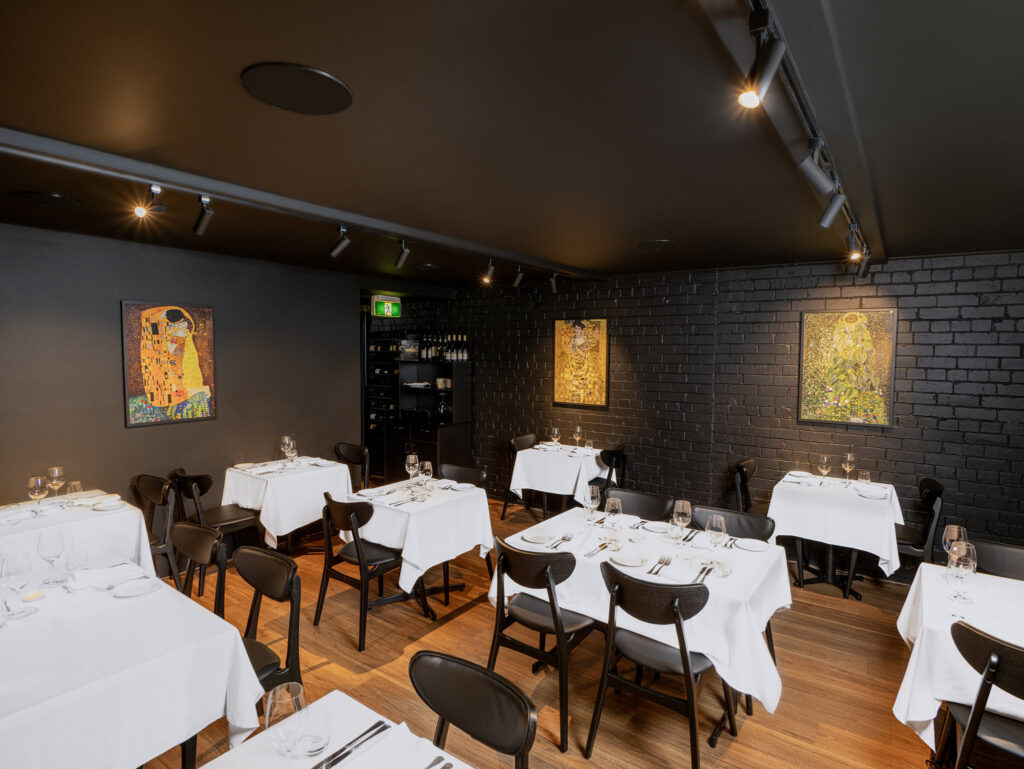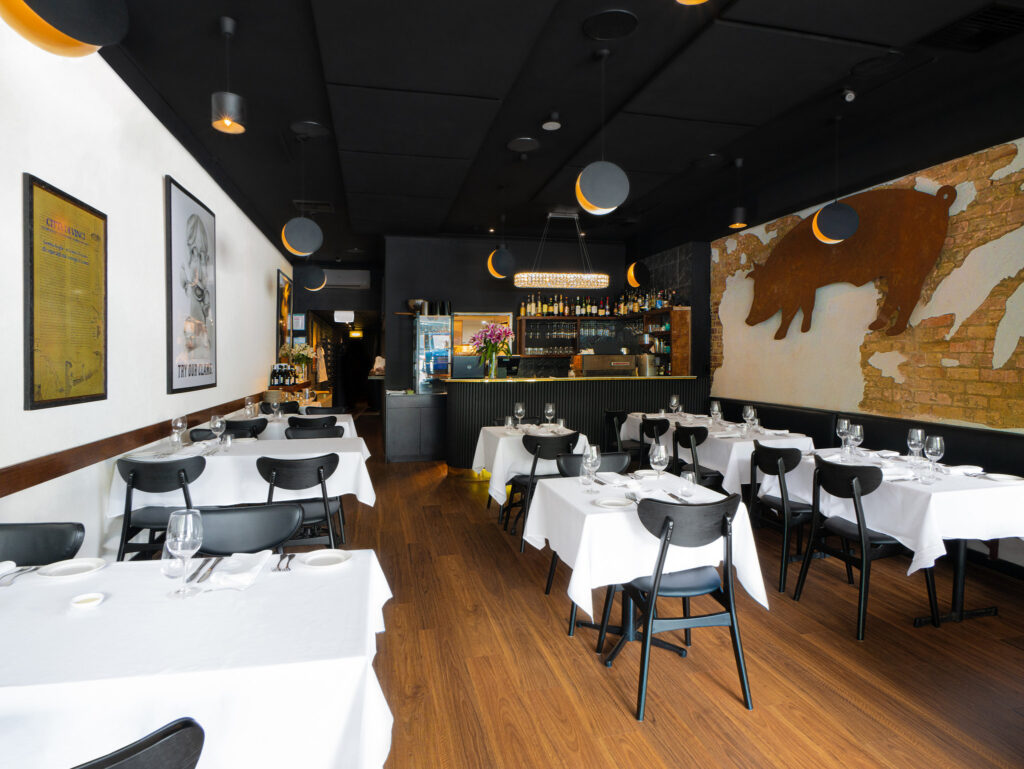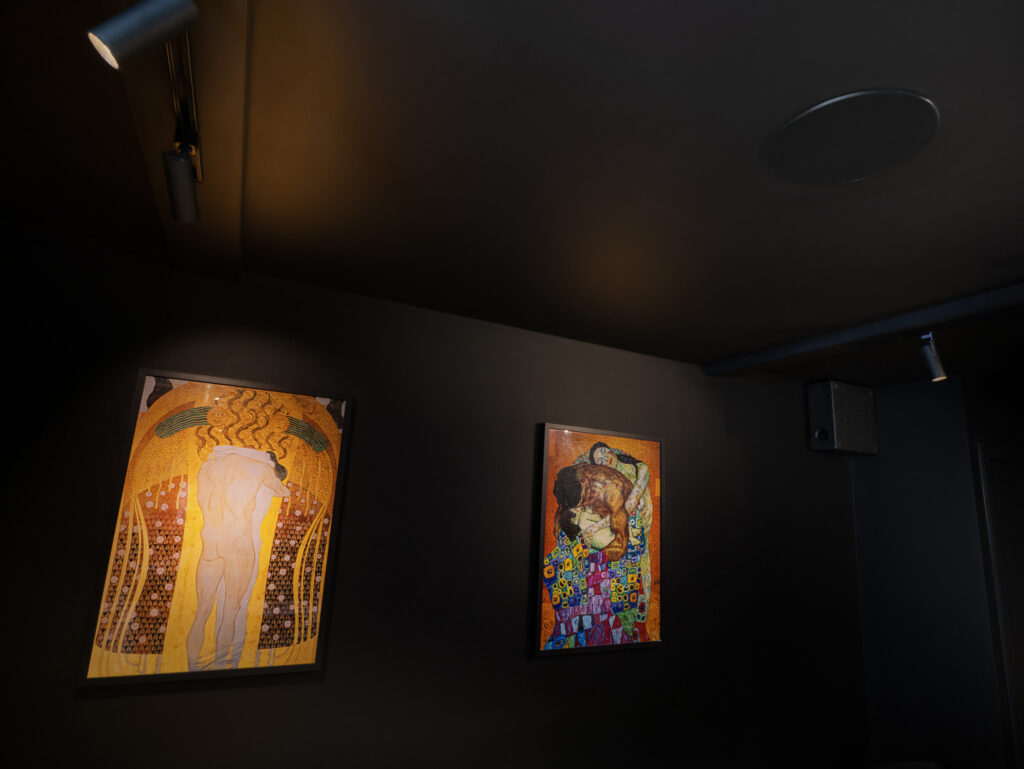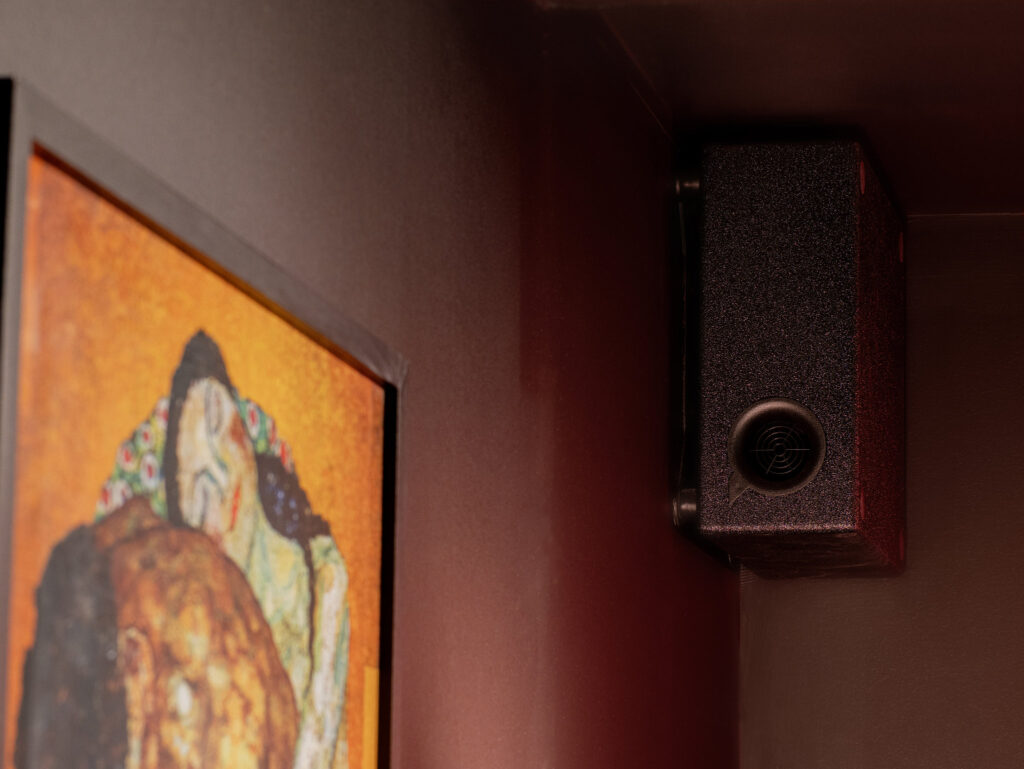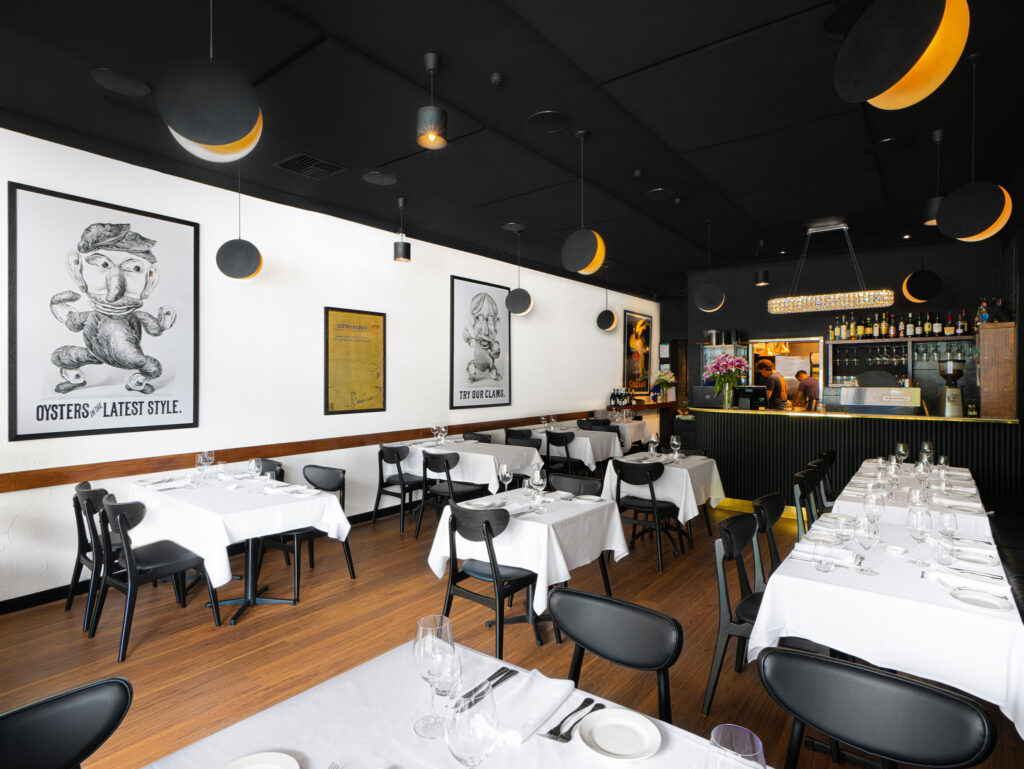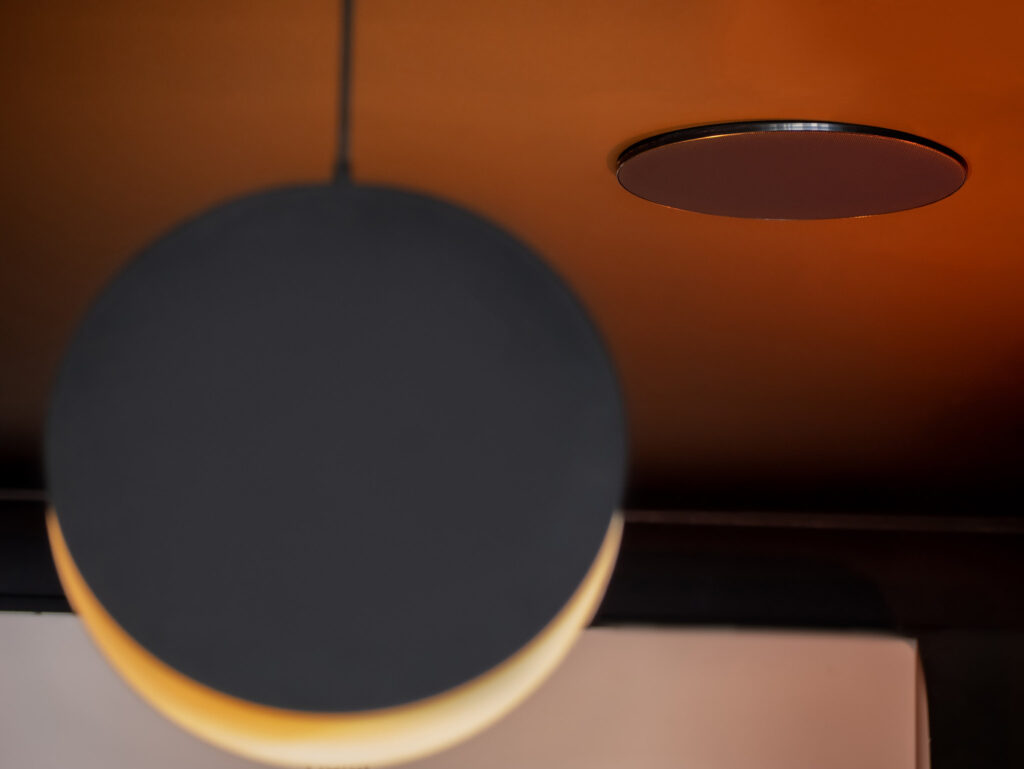Little Black Pig

Venue Overview
Little Black Pig & Sons, located in Heidelberg, offers a dynamic and evolving dining experience, emphasizing simple, locally sourced ingredients and handcrafted dishes. The restaurant features both à la carte and tasting menus, and has recently undergone a renovation, enhancing its style and acoustics. Chef David Lakhi’s culinary vision is complemented by an audio environment that aims to be both inviting and unobtrusive. The venue includes a front dining area, a rear dining area, a corridor, and restrooms. The dining areas feature a mix of hard and soft surfaces, with ceiling heights of approximately 2.7m.
Audio System Objectives
The audio system at Little Black Pig & Sons is designed to enhance the dining experience by providing high-quality, discreet, and user-friendly background music and audio. The system utilizes a zoned approach with in-ceiling speakers, a digital signal processor (DSP), and intuitive wall panel controls. This system ensures even coverage, clarity, and ease of operation for restaurant staff.
The audio system for Little Black Pig was designed with the following core objectives:
- To create an inviting and high-quality audio atmosphere, emphasizing warm, balanced sound at background music levels.
- To ensure the system is user-friendly, allowing venue staff to easily control the audio environment without technical complexities.
- To achieve a discreet installation, ensuring the system remains visually unobtrusive and complements the restaurant’s aesthetic.
- To provide a reliable audio system that operates consistently during all business hours.
System Architecture
To achieve even audio coverage within Little Black Pig’s environment, a zoned system was implemented, dividing the venue into four distinct areas: Front Dining, Rear Dining, Corridor, and Toilets. The system is designed to distribute background music from a dedicated music source.
An NST VMX88 DSP Matrix Processor manages input/zone mixing and control, providing the flexibility to adjust levels and EQ in each zone. Two NST VR2 wall panels, strategically placed in the dining areas, allow staff to easily control volume levels, select zones, and recall pre-set audio configurations.
DSP – Site Wide
- 1 x NST VMX88 Matrix Processor: The NST VMX88 was selected for its flexibility in routing audio to multiple zones, its advanced processing capabilities (including EQ, limiting, and delay), and its compatibility with user-friendly wall panel control.
- 2 x NST VR2 Touch Panel Wall Controller: These panels provide intuitive control for staff, allowing them to adjust volume levels, select zones, and recall pre-set audio scenes (e.g., “Lunch,” “Dinner”).
Amplification – Site Wide
Two Quest QX4300 amplifiers power the system, driving all speakers in low-impedance mode.
- 2 x Quest QX4300 4 x 300W Power Amplifier: These amplifiers provide a total of 2400W (2 amplifiers x 4 channels x 300W) to adequately power all speakers. The amplifiers were chosen for their power efficiency, reliability, and audio quality.
Zone Details
Zone A: Front Dining Room
- Configuration: Stereo
- Speakers: 6 x Quest MX6C in-ceiling speakers
- Subwoofer: 2 x Quest MX6S Low Profile Subwoofer
- Power Configuration: Low-impedance operation
Zone B: Back Dining Room
- Configuration: Stereo
- Speakers: 8 x Quest MX6C in-ceiling speakers
- Subwoofer: 2 x Quest MX6S Low Profile Subwoofer
- Power Configuration: Low-impedance operation
Zone C: Bathrooms
- Configuration: Mono
- Speakers: 4 x Quest MX4C in-ceiling speakers
- Power Configuration: Low-impedance operation
Zone D: Corridor
- Configuration: Mono
- Speakers: 3 x Quest MX4C in-ceiling speakers
- Power Configuration: Low-impedance operation
Featured Applications

Suzie Q
Suzie Q, managed by MAMAS Dining Group, is a modern Chinese restaurant in Prahran, Melbourne. It blends traditional Chinese cuisine with contemporary cocktails, aiming for a sophisticated dining experience.
Read More
Little Black Pig
Little Black Pig & Sons, located in Heidelberg, offers a dynamic and evolving dining experience, emphasizing simple, locally sourced ingredients and handcrafted dishes.
Read More
Amazon State
Amazon State is a multi-level hospitality and entertainment venue located in Hawthorn, which commenced operations in 2023. The venue seamlessly integrates dining and nightlife across several distinct zones, supported by a sophisticated and scalable audio system.
Read More